Abstract
Although from the time of Koch onwards there had been desultory experiments with a variety of gold preparations in the management of pulmonary tuberculosis, gold as a recognised and accepted treatment did not emerge until 1925. In that year Holger Mollgaard of Copenhagen introduced sanocrysin, a double thiosulphate of gold and sodium, with which he had conducted an extensive series of animal experiments. The results of these were considered to justify its use in clinical practice and two physicians, Secher and Faber, undeterred by its toxicity, reported enthusiastically in its favour. Other Danish physicians followed but, alarmed by violent reactions, modified the dosage, an example followed by British workers. Encouraging results continued to be reported although each series contained a significant proportion of failures, and toxicity remained high. The first properly planned and fully controlled clinical trial took place in the United States and produced a report which was wholly adverse and which sounded the death knell of gold therapy throughout America. Until 1934-35 gold was used extensively in Europe but thereafter there was a sudden and largely universal cessation of interest and within a few years gold, introduced with such éclat and carrying so many high hopes, had vanished from the therapy of tuberculosis even though, at that point, no better alternative was available.
Full text
PDF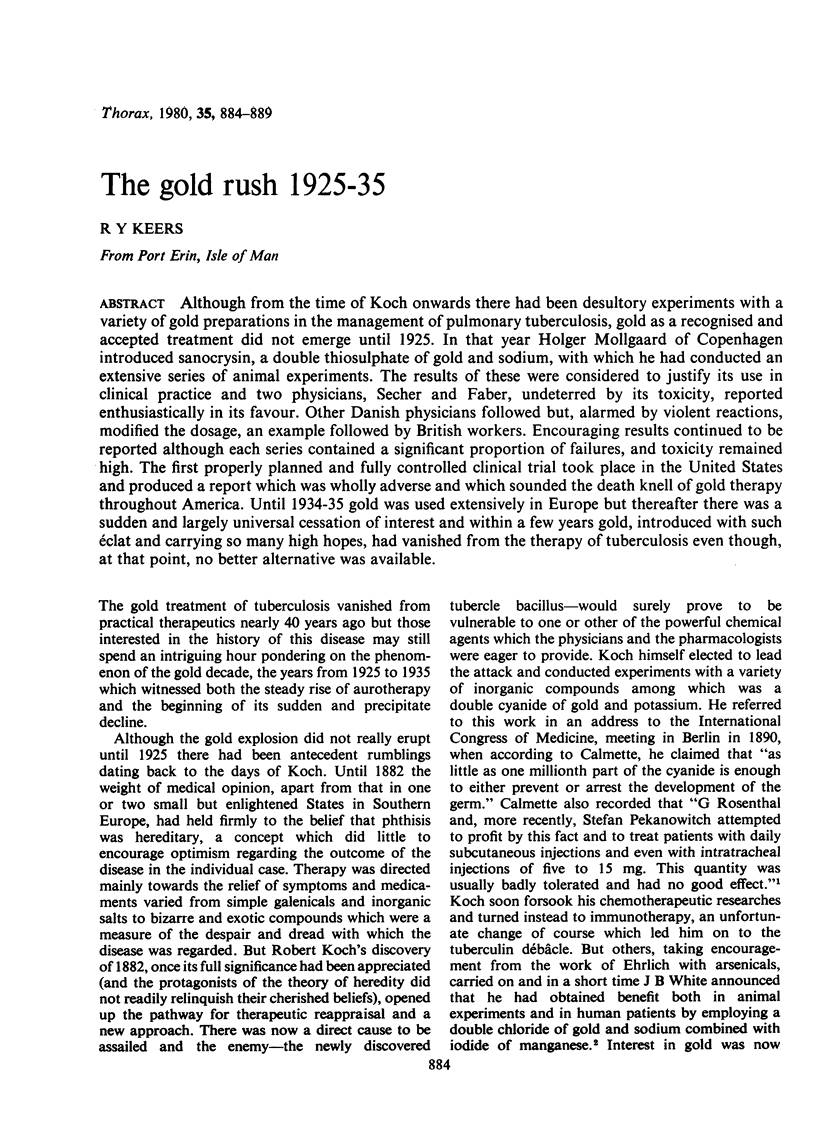
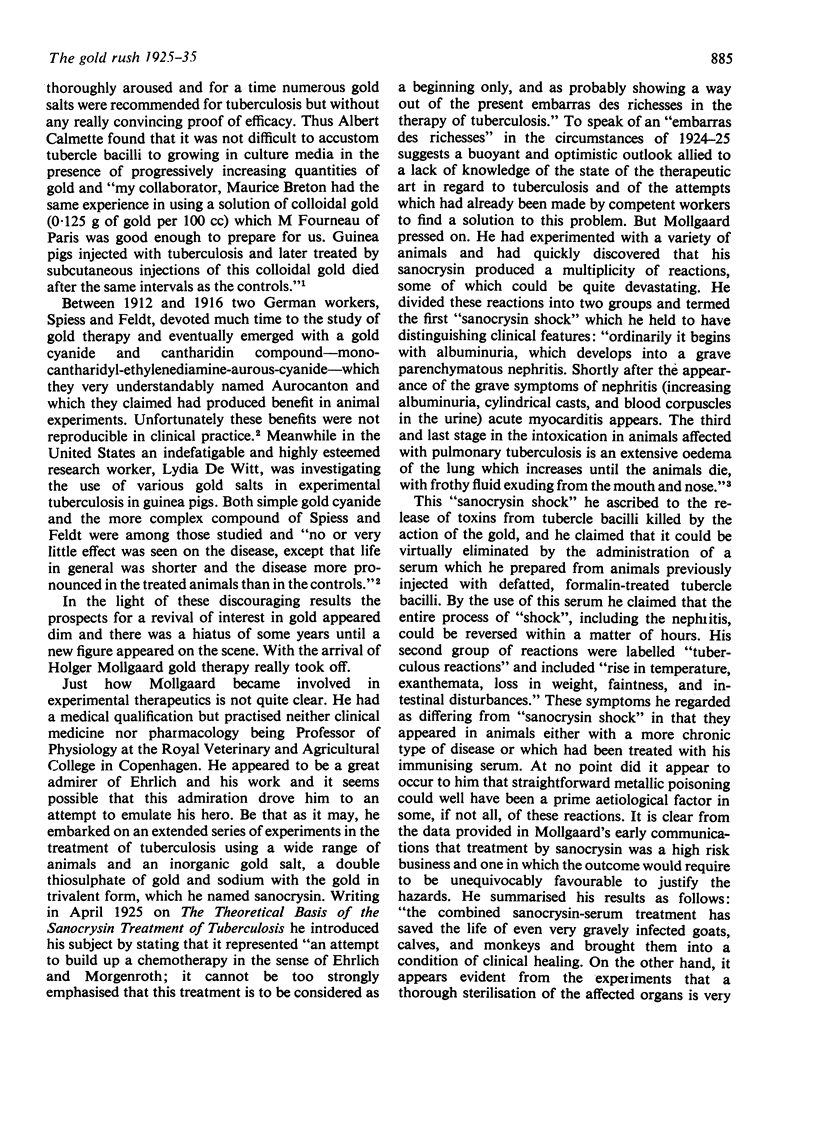
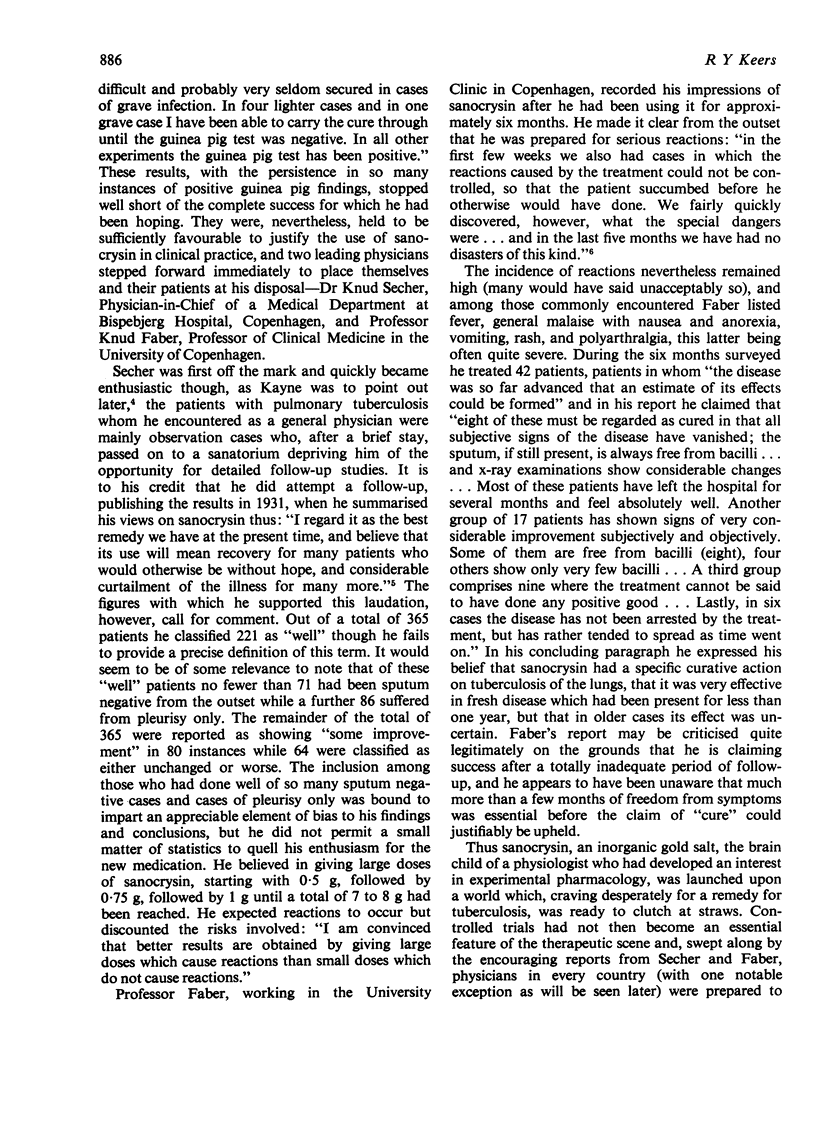
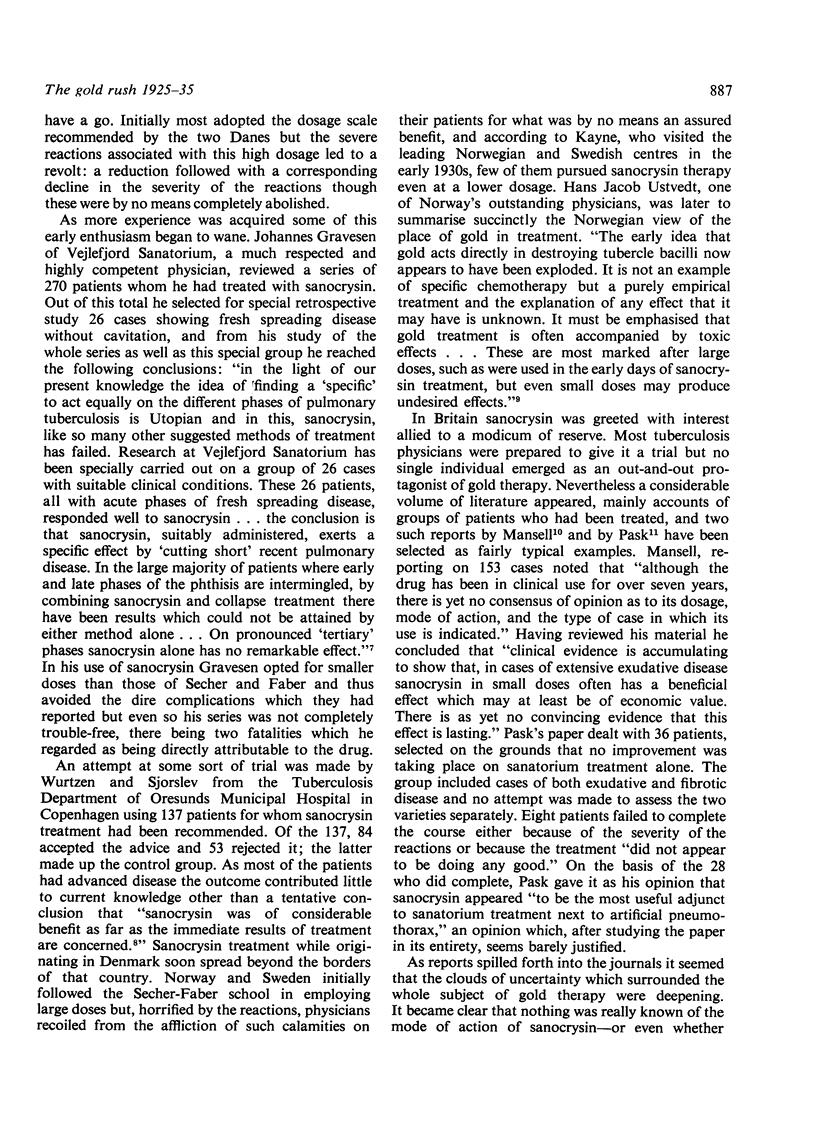
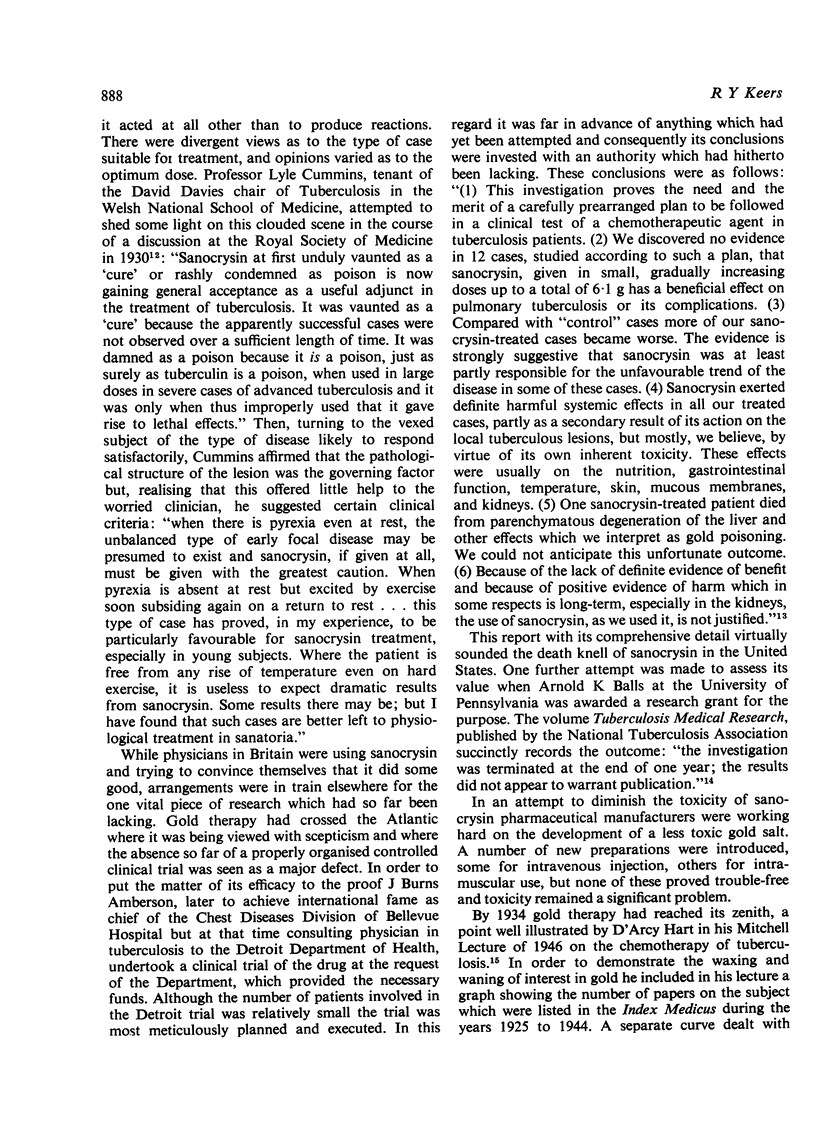
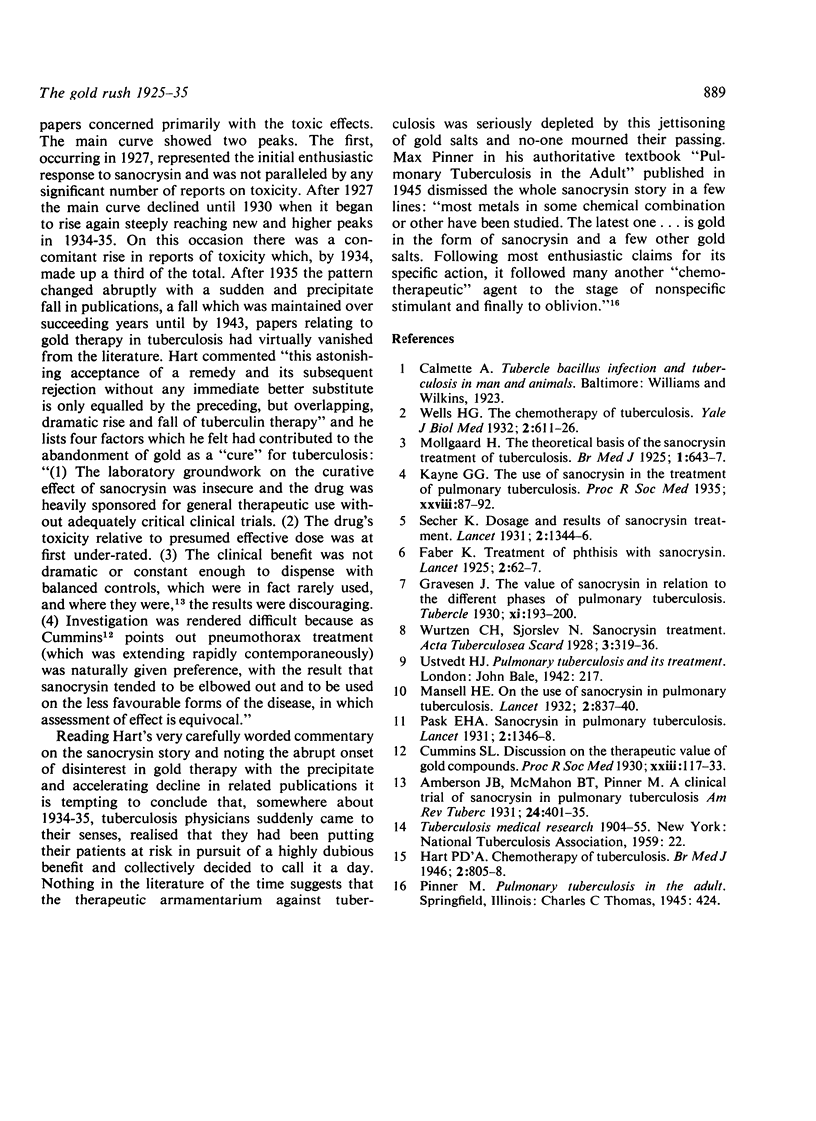
Selected References
These references are in PubMed. This may not be the complete list of references from this article.
- HART P. D. Chemotherapy of tuberculosis; research during the past 100 years. Br Med J. 1946 Nov 30;2(4482):805–passim. doi: 10.1136/bmj.2.4482.805. [DOI] [PMC free article] [PubMed] [Google Scholar]


